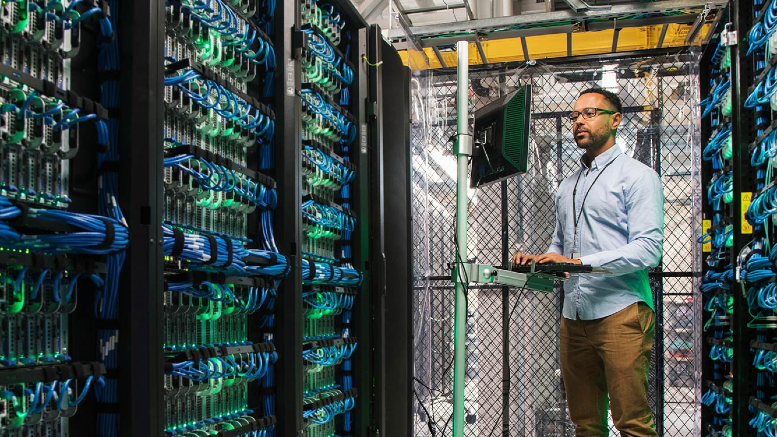The computing crystal ball: Keeping pace with the demands of digital innovation
May 30, 2024 / Mike Thomson
Short on time? Read the key takeaways:
- Rapid technological advancements are placing increasing demands on organizations' computing infrastructures.
- To keep up, organizations must develop comprehensive strategies that align technology investments with business objectives.
- Partnering with technology providers offering advanced computing solutions and expertise is crucial for navigating the future computing landscape.
- Proactively addressing challenges and investing in the right computing infrastructure positions organizations for success in the digital age.
You're leading a forward-thinking organization in today's rapidly evolving digital landscape. Staying competitive means keeping pace with technological advancements at unprecedented speed.
As technologies like AI and large language models (LLMs) continue pushing boundaries, organizations across industries face immense computational challenges. In healthcare, AI enables faster drug development through complex simulations that require vast data processing. Financial services rely on AI for fraud detection and personalized customer experiences by analyzing massive datasets. Manufacturing employs AI for predictive maintenance and supply chain optimization by processing real-time sensor data from connected devices. However, these innovative AI applications place unprecedented demands on computing infrastructures.
The key lies in developing a comprehensive strategy and forging the right partnerships. By aligning your technology investments with your business objectives and collaborating with experienced providers, you can position your organization for success in the digital age.
Setting a strategic foundation for AI innovation
As organizations innovate to stay competitive, they must also prioritize the development of robust, future-proof computing infrastructures. Don't rush adoption without a clear use case. Don't be a hammer looking for a nail. First, identify the core business problem you're solving.
The second priority is having an infrastructure or framework in place to support your initiatives. This could be a data framework, a policy framework, or a framework for prioritizing the projects you want to pursue and understanding their expected return on investment. The worst thing that can happen is to ideate something, gain momentum around it, and then find out you can't scale it or it's too costly. You're then forced to scrap it and start the process again. That’s why it's essential to have these foundational elements established before diving in headfirst.
Building an AI-ready infrastructure
Adopting AI requires specialized infrastructure beyond traditional data centers. AI workloads leverage accelerators like NVIDIA GPUs optimized for parallel processing, which generate significant heat and require new cooling methods like liquid cooling or forced air cooling systems. The incredible computing power also necessitates robust power distribution and interconnect fabrics. An integrated AI infrastructure solution designed for these unique power, cooling, and connectivity demands is critical.
When considering LLMs, data management is a critical aspect of the process. You'll need to decide whether to buy a pre-built LLM or create your own based on your organization's data. You'll also need to consider how you'll enrich that data set, ensure it's free from bias, and address any ethical concerns related to the data you're using. Additionally, you should determine how iterative your model will be and establish processes for updating it regularly. Lastly, and perhaps most importantly, you have to secure your data. These considerations all fall under the umbrella of master data management.
Realizing the power of hybrid multi-cloud
So, how do you bring all of these pieces together? The answer lies in embracing a hybrid multi-cloud model. By leveraging a combination of on-premises infrastructure, private cloud, and public cloud services, you can allocate workloads to the optimal computing environment – whether that's classical, high-power, quantum or edge computing. This approach allows you to tackle complex computational problems and bring back results seamlessly. You're not constrained by the limitations of a single infrastructure model. Instead, you can tap into the power of multiple computing paradigms and achieve a level of optimization that isn't possible with a solely on-premises setup.
Democratizing AI
Perhaps the most exciting development in the AI landscape is the democratization of technology. You no longer need a team of specialized programmers to develop AI solutions. Now, professionals across disciplines can leverage conversational prompts to articulate their ideas and rapidly prototype solutions, democratizing the development of AI applications.
This is a major shift. It puts the power of AI into the hands of those who understand the business problems best. It streamlines the ideation process and allows for faster innovation. But it's important to remember that ideation is just the starting point. To bring a proof-of-concept to production, you still need the rigor and expertise of traditional models.
Partnering for success
A partnership with a company like Unisys can be a game-changer. We bring a two-pronged approach to helping organizations succeed in their AI journey. First, our consulting services help lay the groundwork for success. We work with organizations to establish the necessary procedures, policies, and prioritization frameworks before they embark on their AI initiatives. This upfront planning is crucial—it helps them avoid the pitfalls of diving headfirst into AI investments without a clear strategy.
But we don't stop there. We're also actively developing AI adjacencies to our existing solutions. From knowledge management LLMs that support service desks to AI Ops solutions that optimize cloud environments, we're innovating at the forefront of AI to drive tangible value for our clients. We're not just talking about the potential of AI – we're making it real.
Navigating the demands of the future
As technological change accelerates, organizations face immense pressure to adapt and evolve. However, by developing a comprehensive computing strategy that aligns technology investments with business objectives and partnering with experienced providers like Unisys, organizations can navigate the complexities of the future computing landscape. The time to act is now – your organization must proactively embrace AI and other cutting-edge technologies, define your computing strategy, identify the right partners and invest in the right infrastructure.




















